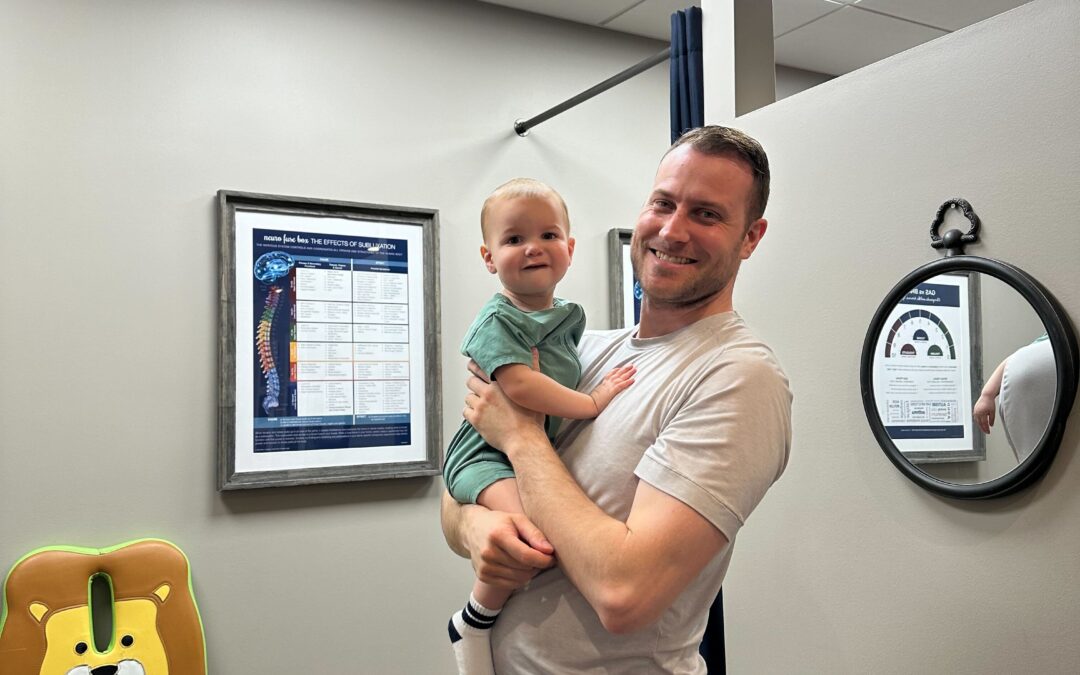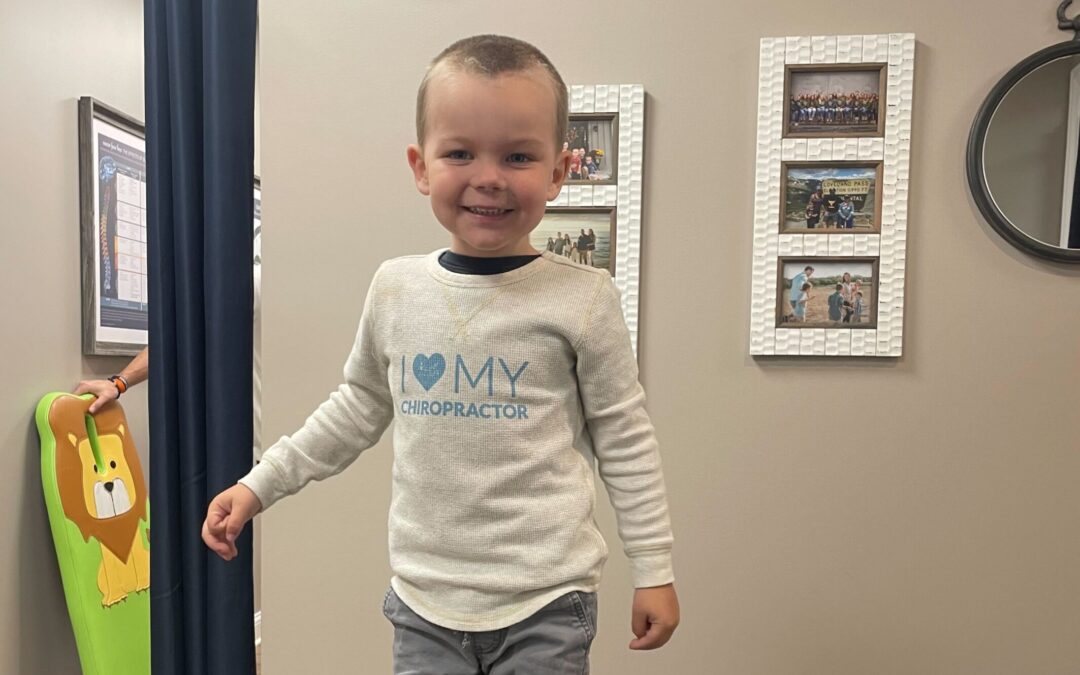In our core article about subluxation here on the PX Docs website, we break down the three (3) interwoven elements of subluxation (misalignment, fixation, and neurological dysfunction). But for the purpose of this article, we want to take your understanding of the stages of subluxation to an even deeper level and make it much more personal and relatable to patients, not just doctors.
Put simply, subluxation sucks. That’s about as “plain English” as we can make it. Whether it be mild, moderate, or severe, subluxation interferes with and alters the function of the most important system in the entire body — the nervous system.
Having dysfunction within any biological or physiological system is not good, but having dysfunction within the central + autonomic nervous system is the worst kind of dysfunction since the nervous system controls and coordinates every other system, tissue, and cell in the body.
So, if any subluxation of any kind is no good, what happens when subluxation is present for years or even decades and progresses into something even more severe and chronic? Well, in today’s overwhelming, stressful, chaotic, and toxic world, that is exactly what’s happening far too often.
The levels of subluxation we are seeing in practice as chiropractors today must be significantly more severe than what chiropractors a generation or two would have seen. That goes for both quantitative and qualitative, meaning how many kids and patients are subluxated, to begin with, and to what severity and chronicity their subluxation patterns are currently at.
We’ve always known our patients to be stressed out and full of tension. But today, we see more “wound up and worn out” or “wired and tired” patients than ever before, and the reality is this – we need to update and adapt our clinical protocols to address both the tension and exhaustion components.
The Perfect Storm and Rise of Chronic Disease
This is exactly analogous to what doctors and providers within other specialties are experiencing, since rates of everything from heart disease, cancer, autism, anxiety, depression, and virtually every other chronic disease out there have risen dramatically over the last few years. Since the presence and severity of subluxation is tied to the presence and severity of chronic stress and toxicity, just like all other chronic lifestyle diseases, it makes perfect sense that we’re dealing with a more subluxated population than ever.
In our work here within the PX Docs Network, we refer to this unfortunate reality as the “Perfect Storm,” and we are well aware that it’s not something reserved for stressed-out adults only, but that our kids are exposed to stress, toxins, and subluxation earlier in life and more severely than ever before.
In today’s world, we’ve got more women than ever experiencing chronic stress and anxiety, along with increased exposure to toxins through things like beauty and self-care products, birth control medications, and our toxic food supply, leading to more fertility issues than ever before. Then, from there, we’ve “medicalized” pregnancy and added more stress, fear, and anxiety to that essential season of life than ever before. To top it off, we’ve drastically increased the use of birth interventions such as induction, forceps, vacuum extraction, and c-section, leading to frequent physical injury and trauma to the delicate nerve tissues and regions of the brainstem and upper cervical spine.
Experiencing this “Perfect Storm” day after day for the last 15+ years of clinical practice experience led me to take on a very important task – creating a clinical assessment and examination system through which we could “categorize” or “classify” subluxation into three (3) different stages of progression or severity.
The 3 Stages of Subluxation’s Progression:
- An excessive, stuck-on sympathetic nervous system response (“fight or flight”), combined with a suppressed or underactive parasympathetic nervous system response (“rest, digest, and regulate”)
- A disorganized or “confused” central and autonomic nervous system (in kids, this leads to missed milestones, developmental delays, etc.)
- An exhausted, entirely nonadaptive nervous system (allows for chronic illness to set in)
Sympathetic Dominance Sets In First
The most important thing for parents and patients to understand here is the sequence or progressive component of this. God designed our bodies and specifically our nervous system to be able to adapt to and deal with stress, so the first stage of subluxation discussed here (sympathetic nervous system response) is not by itself a negative thing.
Instead, the trouble comes when subluxation remains and persists over time, thus allowing the sympathetic nervous system response to be excessive both in time (duration) and severity, as well as allowing for suppression and fatigue to set in within the parasympathetic nervous system.
This autonomic nervous system imbalance that is triggered by subluxation is called dysautonomia. Dysautonomia can be looked at as both a condition in and of itself, as well as an underlying mechanism of so much chronic illness, as we’ll explore further here.
Altered + Delayed Neurodevelopment
“You can’t be in growth and protection at the same time.” – Dr. Bruce Lipton
That quote from one of the leading researchers and experts in the field of epigenetics and cellular biology really helps us understand how the first stage of subluxation leads to the second one. Once a child’s nervous system becomes stuck in sympathetic dominance (protection), it does not spend adequate time in parasympathetic mode, which is where all growth and development occurs.
We can keep this concept very simple. Infants are supposed to do just a small handful of things in those early, formative stages of life – eat, poop, sleep, and start to move. Our toddlers still need naps, grade school kids require far more recess and free time than classroom time, and even teenagers still need many, many hours of sleep.
It’s these basic elements of life that are most essential and important to development. But when the sympathetic fight or flight side of the nervous system is stuck on, and the parasympathetic system and vagus nerve are shut down, these functions break dow, and a child’s overall development is thrown off course.
When it comes to neurological development and just overall health period, there is no more important nerve than the vagus nerve. To learn more about this absolutely vital nerve and its role in this whole process, click here.
A Neurological Pandemic of Exhaustion
While the words I chose for the header of this section just above are rather harsh, I honestly don’t know what else to call what we’re seeing day after day in clinical practice other than a pandemic. Truth be told, doctors and providers who share our philosophical and clinical construct have been sounding the alarm on this rising pandemic for a long time.
Once again, we can bring in the parallels of all chronic diseases here. It’s not like we don’t know what’s causing the significant rise in heart disease, cancer, anxiety, depression, and even autism.
Now, as Neurologically-Focused Chiropractors, we finally have an appropriate care model and clinical protocol to best serve our patients struggling with chronic health challenges by deepening our understanding of neurological exhaustion and then updating and adapting our clinical protocols to appropriately handle these cases.
Lastly, I wish so badly that we could only speak about this third progressive stage of subluxation in relation to our adult patients, not kids. But in the last couple of years, we’ve seen more neurologically exhausted and nonadaptive pediatric patients than ever, and we developed an entire Neurological Intensive Program at our clinic just for this reason.
During my first couple of years of practice, we certainly saw some teenagers and young adults struggling with stage 3 of subluxation and neurological exhaustion, but today, we see this stage already present in children as young as two years old. Sadly, we now even see signs of neurological exhaustion and nonadaptive states in infants using our HRV technology, with a clear line of demarcation between infants born during the Covid lockdowns and chaos and those not.
Why Is This So Important to Both Chiropractors and Patients?
While standard musculoskeletal and spinal care-focused chiropractors have long discussed with their patients the four (4) stages of disc degeneration, nothing similar or clinically useful existed in the specialized field of Neurologically-Focused Pediatric Chiropractic.
Unfortunately, the post-doctorate Pediatric Chiropractic training I went through taught me clinical care models and protocols developed decades ago, and outside of our PX Docs Network and training, that is still the current reality outside of PX. Just like conventional medical care and the standard pediatricians are quite outdated in their understanding of neurology and neurodevelopmental disorders in kids; it’s vital that our profession levels up our understanding and clinical care protocols as well.
Putting subluxation into these three (3) progressive stages helps us clinically with our decision-making and care recommendations and also helps patients and parents better understand what expectations when it comes to progress and results with neurological healing and restoration.
Classifying subluxation into these three (3) progressive stages has become essential to be able to deliver upon our commitment and promise to our patients – providing unique, personalized, customized care to each and every individual patient in order to ensure optimal results and outcomes clinically.
Being able to classify and determine each patient’s level of severity when it comes to neurological dysfunction (subluxation), allows us to custom tailor both the care plan and adjusting protocol clinically proven to achieve those optimal responses and outcomes.
How We Determine the Stages of Subluxation
The first step in determining which stage of subluxation severity a patient may be in is taking an in-depth case history and doing a thorough consultation with the patient or parent. Put simply, the earlier the “Perfect Storm” began, the more elements of it the patient went through, and the more severe the stressors or injuries were, the more we can suspect the patient is in the later stages of subluxation and may be neurologically exhausted.
However, just like every element of clinical work, measuring symptoms alone is NOT an effective way to generate optimal results. Tracking and treating symptoms is the business of medicine, whereas Neurologically-Focused Chiropractic Care is almost entirely dependent upon objective assessments and measuring neurological dysfunction (subluxation, dysautonomia, etc.) directly.
In a PX Docs Practice, this is done using an incredible piece of technology called the INSiGHT. These scans allow us to directly measure subluxation and dysautonomia, as well as allow us to both quantify and locate neurological dysfunction.
For the purpose of this article, it’s the measuring and quantification of subluxation that is most essential. Put simply; we can find and detect the presence of not just sympathetic dominance (stage 1) via these INSiGHT Scans but also find and quantify the levels of disorganization (stage 2) and exhaustion (stage 3) if present.
There are three (3) separate scans within an INSiGHT exam, and each of them individually has a way of showing us a patient is in stage 2 and neurological exhaustion if that turns out to be the case. We’ve provided an example of all three (3) below, along with a short description.
The first scan on the left is the HRV Scan (Heart Rate Variability), This patient is a 3-year-old who had battled gross motor delays, constipation, and seizures for most of her life, causing neurological exhaustion (stage 3) to set in. The white dot being way low on the graphic plot of her HRV is what indicates the exhaustion.
The middle scan is a fully exhausted NeuroSpinal EMG Scan, which measures the tone and coordination within the neuromotor or neuromuscular system. This scan is on a teenage patient who struggled for years with anxiety, depression, and autoimmune disorders. The neurological exhaustion is evident in this patient primarily through the low Total Energy and Pattern scores, which should be at 100 for optimal neurological function and health.
Finally, the scan on the far right is a NeuroThermal DTG Scan, which measures dysautonomia. Whenever this DTG scan shows up as mostly blue and collapsed in along the lines on the right and left borders, that is a sign of neurological exhaustion and shutdown having set in.
To learn more about the INSiGHT Scans in even greater detail, click here.
Before we move on and bring this in-depth article to a close, it’s important to know that all three of these patients whose initial scans are pictured above are now thriving and wildly healthy! Each of them came to our practice, PWC Chiropractic, for our 2-Week Neurological Intensive Program, which was designed and built specifically to handle these toughest of the tough cases and is where we first saw the need to develop these three (3) progressive stages of subluxation.
What To Do If You or Your Child Are in Phase 3 of Subluxation?
The most important thing for every single patient to know, especially when it comes to our kids, is this one foundational truth – we are designed to heal!
For far too long, the conventional theory of neurological injury and dysfunction was that things could not heal and get better. But in today’s world, we have a much more updated and in-depth understanding of what’s called neuroplasticity and overall neurological function. Through this understanding, we know that just the opposite is true and that kids and patients who have suffered from even things like birth trauma and other serious physically traumatic injuries can and do heal quite exceptionally.
Neurological healing is perhaps the most complex and intricate form of healing out there, and yet possibly also the easiest for patients and parents to understand, since it comes down to really just two main factors:
- Frequency of Care
- Duration of Care
That’s it! As in-depth and advanced as we now are with Neurologically-Focused Chiropractic Care, the job of your PX Doc is to first dial in those two essential elements – time and repetition.
Just like getting in shape to run a marathon, the more training (repetitions) you put in over time (duration), the more likely you are to succeed and ultimately hit your goal. That process doesn’t just build your cardiovascular system and endurance; it trains your nervous system to be able to adapt enough to handle the demands that running a marathon places on your entire body.
So, for our fully exhausted and chronic patients, when it comes to neurological restoration and healing, we’ve found a way to go what I call “fast and slow at the same time” in order to achieve optimal results in as short of a time frame as possible.
We do this by taking our exhausted patients and adjusting them at least one time per day in the early stages, with intensive patients being even twice a day. This is how we look to “speed” the process of neurological healing in these more challenging patients.
Additionally, it’s then important to adapt our technique and adjusting protocols to know that “less is more” when adjusting the most chronic and exhausted patients. If we try to do too much adjusting or add in other healing components too soon, we further exhaust and overwhelm an already exhausted and overwhelmed system.
Sadly, this is what happens to many tough cases (especially TBI patients) when they are put in other intensive programs outside of the PX Docs Network. Many times, these fully exhausted patients are put through 2, 4, or even 8 hours of therapy and treatment per day. While these programs that incorporate extensive neuro-integrative therapies, primitive reflex work, nutritional protocols and detoxification, primitive reflex work, lasers, and so forth look fantastic on a website to a family in need, they often can lead to even further neurological confusion (stage 2) and exhaustion (stage 3) in certain patients.
Expect Healing + Experience Miracles
We’ll close this article down by saying the most important thing one more time – we are designed to heal! If you feel like you’ve already exhausted everything traditional medicine (medications, surgeries, therapies, etc.) and maybe even natural health (diet changes, detoxes, supplements, etc.) has to offer, wait until you see what neurological healing and restoration is capable of!
We take healing for granted, and we don’t “watch and wait” for it to happen, either. We get to work. We do our job by taking an in-depth case history, diving deep into neurological dysfunction and subluxation with the INSiGHT Scans, and then we build a fully customized and personalized care plan for each and every patient.
The plan is everything! With this article, we did our very best to break down subluxation into its three (3) distinct stages to give you a more in-depth understanding of how this all works than ever before, but please know this, parents and patients – we’ve got a plan!
Every single patient is capable of healing, and that comes in all sorts of different amounts and capacities. Our care does not look to treat or cure any condition or health challenge whatsoever but instead focuses solely on restoring optimal neurological function and regulation no matter what we’re up against!
If you haven’t already gotten connected to your local PX Doctor, please do so by visiting our directory here. After the consultation and examination process, they’ll sit down with you and show you which stage of subluxation progress you or your child may be at and talk through that care plan of healing and neurological restoration built just for you.
Get your family’s healing journey started today! To see other stories of hope and healing, be sure to visit our “Stories of Hope” page, where you’ll see kids and patients who started their healing journey at various stages of subluxation and all experienced incredible results!





